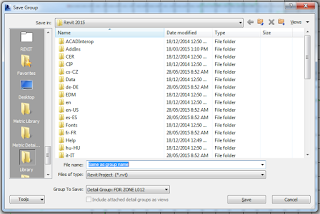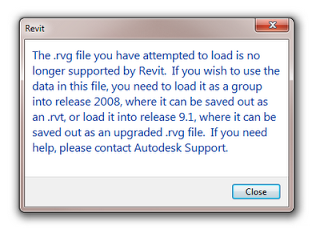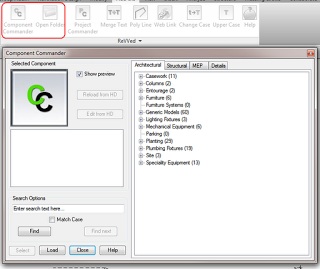I saw this message from Revit today and I wanted to share it with you:
RVG files used to be Revit’s way of saving Groups out, until RVT became the standard for saving Groups. From the message, it looks like this occurred circa version 9.
Text-only:
The .rvg file you have attempted to load is no longer supported by Revit. If you wish to use the data in this file, you need to load it as a group into release 2008, where it can be saved out as an .rvt, or load it into release 9.1, where it can be saved out as an upgraded .rvg file. If you need help, please contact Autodesk Support.
So, if you have any old-school RVG files kicking around, you probably should upgrade them before it becomes too much of a pain to do so!



